The Story of Culture and Arts
- Image resource of Korean history
- Documents from History TextBooks
- Culture & Art Stories from Korean History
- Culture & Art Stories from Korean History - Korean
- National Institute of Korean History
- History net
- About the site
- Introduce
-
Numerous topics related to Korean culture and art are mentioned in middle and high school national history textbooks, but most of them are briefly described by era, making it difficult to understand their concepts, transition processes, and characteristics.
<Culture & Art Stories from Korean History> produces and provides video materials based on expert commentary on the flow, change process, characteristics and characteristics of each major topic in the field of culture and art in Korean history.

Scenario
This painting of an expansive mountain range, “A Dream Journey to Peach Blossom Land, is a depiction of Prince Anpyeong’s dream. Its artist is An Gyeon, one of the many court painters who worked in the Joseon Dynasty’s Royal Bureau of Painting.
A painting of an expansive mountain range
“A Dream Journey to Peach Blossom Land,”
a depiction of Prince Anpyeong’s dream
An Gyeon, the artist of
“A Dream Journey to Peach Blossom Land,”
was a court painter in the Joseon Dynasty’s Royal Bureau of Painting.
Depicting Joseon History with a Brush - Paintings of the Joseon Dynasty
In its early days the Joseon Dynasty created the Royal Bureau of Painting to train artists at a national level. However, similar institution, called the Bureau of Paintings, had already existed in the preceding Goryeo Dynasty.
Prince Anpyeong had a dream on April 20, 1447. He was on horseback, accompanied by Park Paeng-nyeon, and was led to Peach Blossom Land by a figure dressed in rustic mountain garb.
When the prince arrived at Peach Blossom Land, he found Shin Suk-ju and Choe Hang were already there.
In his dream, the prince enjoyed an idyllic outing, composing poetry.
“A Dream Journey to Peach Blossom Land,”
a depiction of Prince Anpyeong’s dream of April 20, 1447
Prince Anpyeong and Park Paeng-nyeon were guided
to Peach Blossom Land by a mountain hermit
A dream of an idyllic outing, composing poetry with Choe Hang
and Shin Suk-ju in Peach Blossom Land
“A Dream Journey to Peach Blossom Land” was painted based on an auspicious dream of Prince Anpyeong of April 20, 1447.
He dreamt he was on a journey with his friends, Park Paeng-nyeon, Choe Hang, and Shin Suk-ju.
Realizing this to be a special dream, he summoned An Gyeon, a painter from the Royal Bureau of Painting.
Prince Anpyeong felt the dream was special and summoned An Gyeon to depict it in a painting. An Gyeon completed “A Dream Journey to Peach Blossom Land” in just three days.
An Gyeon, a court painter,
was commissioned to paint a description of Prince Anpyeong’s dream
An Gyeon completed his painting in three days
There is no record indicating the Bureau of Paintings was a central government facility during the Goryeo period.
However, one record does state the Bureau of Paintings was established as a regional government facility in the Western Capital. A Department of Painting mentioned in historical documents is assumed to be another name for the Bureau of Paintings.
There is no record of the Bureau of Paintings
as a central government facility in the Goryeo Dynasty
A record does exist of the Bureau of Paintings being established
as a regional government facility.
The court painters of the Royal Bureau of Paintings were responsible for creating paintings with special purposes, such as illustrations for publications and portraits of kings and their vassals.
However, one record that indicates that the treatment of these court painters was less than ideal.
The Duties of Court Painters
- Responsible for creating paintings for special
purposes, such as illustrations for publications
and portraits of kings and vassals
One record attests to the less than ideal treatment
of court painters
Products featuring animals such as dogs and cats are quite popular these days. Did you know that paintings of cats and dogs were also made during the Joseon Dynasty?
A falcon perches on a rack decorated with fabulously embroidered silk.
The gold dragonhead decoration on the rack signifies it belongs to a member of the Royal Family.
This is “Northern Goshawk on a Perch,” painted by Yi Am “Paintings of wings and fur” (or jongsilhwa) refers to a genre of painting featuring as its subject birds, animals, or flowers.
Yi Am was a leading court artist known for his jongsilhwa paintings. Another of his representative works is “Painting of a Dog and Puppies.”
A falcon perching on a rack decorated
with fabulously embroidered silk
The gold dragonhead decoration on the rack
signifies the owner to be a royal family member
“Northern Goshawk on a Perch” painted by Yi Am
Paintings of wings and fur (or jongsilhwa), a genre of painting
featuring birds, animals, or flowers
Yi Am, a leading court painter known
for his jongsilhwa paintings
“Painting of a Dog and Puppies” by Yi Am
“Painting of a Dog and Puppies”
163.0 x 55.5cm (hanging scroll), 73.5x42.5cm
owned by the National Museum of Korea
Neo-Confucian literati rose to prominence during King Seongjong’s time.
Gatherings through which executive government officials expanded their political bases were quite popular during this period.
Paintings of scholars' gatherings were hanging scroll paintings with the title, painting, and seating chart specifying the names of the attendees. “Painting of a Gathering in the Same Year at the Same Time,”
painted in 1531, is a leading example of a painting of a scholars’ gathering, this one of seven people, including Kim In-hu
Gatherings through which executive government officials
expanded their political bases were quite popular
during the time of King Seongjong when Neo-Confucian
literati rose to prominence
Paintings of Scholars’ Gatherings
Hanging scroll paintings that specify the attendees’ name in the title,
Painting, and seating chart
“Painting of a Gathering in the Same Year at the Same Time”
- Painting of a gathering of seven scholars,
including Kim In-hu, in 1531
There were three brothers who were quite active in the late 17th century when members of the Westerners Faction led political and academic circles—something they had done since the Injo Restoration of 1623.
These were Kim Su-jeung, Kim Su-heung and Kim Su-hang of the Jangdong Kim clan
Kim Su-jeung began the trend of painting the villas of Joseon scholars in the style of the nine-bend stream.
When he had to leave his villa in Kogun and move to Seoul, in order to remember this home, in 1682 he commissioned Jo Se-geol, a Pyeongyang artist, to paint it. The painting is titled, “Nine-Bend Stream of Kogun.”
Kim Su-jeung began the trend of painting
the villas of Joseon scholars in the style
of the nine-bend stream
“Nine-Bend Stream of Kogun”
- Commissioned by Kim Su-jeung and painted
by Jo Se-geol in 1682 to commemorate
Kim’s departure from Kogun and relocation to Seoul
Kim Su-hang, who was appointed as an overseer of regional exams in Hamgyeong-do Province in 1664, and proceeded there accompanied by the court painter Han Si-gak, commissioned paintings such as “Special State Examination for Applicants from the Northern Frontier” and “Records of Rhyme Poems Composed at the Northern Frontier.”
Kim Su-hang, appointed overseer of regional exams
in Hamgyeong-do Province in 1664
Accompanied to his post by Han Si-gak, a court painter,
Kim commissioned paintings such as
“Special State Examination for Applicants
from the Northern Frontier”
and “Records of Rhyme Poems
Composed at the Northern Frontier”
Kim Su-heung. who was the Minister of Finance in 1667, commissioned a folding screen depicting King Hyeonjong’s procession to Onyang Hot Springs.
Kim Su-heung, Minister of Finance in 1667
Wang Wei’s Painting of Wangchuan Villa
- A folding screen depicting King Hyeonjong’s
procession to Onyang Hot Springs
Jeong Seon, an artist sponsored by the Jangdong Kim clan, published a painting album following his journey to the Geumgang Mountains in 1711 and 1712.
“Album Transmitting the Spirit of Sea and Mountain” is an album of Jeong Seon’s paintings along with the poems of Yi Byeong-yeon.
Jeong Seon’s paintings of the Geumgangsan Mountains are considered some of the finest renderings of famed scenic sites to be produced in the Joseon period.
Jeong Seon, artist sponsored
by the Kim clan of Jangdong
Album of Pungak Mountain
- Album of works by Jeong Seon
after his journey to the Geumgang Mountains in 1711, 1712
“Album Transmitting the Spirit of Sea and Mountain”
An album of Jeong Seon’s paintings
Along with Yi Byeong-yeon’s poetry
Jeong Seon’s painting of the Geumgangsan Mountains
are considered some of the finest paintings
of famed scenic sites to be produced in the Joseon period
In the late 18th century, paintings of scholars’ studies, stationery, and books became popular. King Jeongjo ordered court painters to visit the homes of officials of the Royal Archives and paint their portraits, homes, push-up windows, desks, and inkstones.
This is presumed to be related to the period trend of collecting various antiques and books from Qing China.
Paintings of scholars’ studies
were popular in the late 18th century
Paintings of Scholars’ Studies
Paintings of scholars’ studies,
Stationery, and books
King Jeongjo’s Order:
"Court painters should visit the homes
of officials of the Royal Archives
and paint their portraits, homes, push-up windows,
desks, and inkstones."
This is presumed to be related to the period trend of collecting
various antiques and books from Qing China
By the 18th century, paintings were no longer something only the wealthy nobility could enjoy.
In the 3rd year of King Sunjo’s reign (1803), there were commonplace paintings depicting scenes of painting sales on Seoul’s Gwangtonggyo Bridge.
Portraits by court painters like Kim Heung-do were bought and sold in shops specializing in paintings and calligraphy.
After the regency of Queen Jeongsun ended and King Sunjo began to govern in his own right in 1803, the Kim clan of Andong came to dominate the government and to exert its influence.
The Andong Kims, including Kim Jo-sun, made a new copy of the “Nine-Bend Stream of Gosan,” which Song Si-yeol, Kim Su-hang and his brothers tried to create despite their fierce political conflicts.
“Folding Screen featuring Poems and Paintings on the Nine-Bend Stream of Gosan,” which was produced in the autumn of 1803, is composed of 12 panels.
10 court painters, including the most illustrious artists of the era, Kim Hong-do and Kim I-hyeok, participated in its creation, while the compositions on each of the screen’s panels were written solely by members of the Andong Kim clan.
In 1803, the Kim clan of Andong began to wield
its political power
Members of the Andong Kims, including Kim Jo-sun,
made a new copy of the “Nine-Bend Stream of Gosan”
“Folding Screen featuring Poems and Paintings
on the Nine-Bend Stream of Gosan”
- Produced in the autumn of 1803
- Composed of 12 panels
10 court painters, including the most famed painters of the day, Kim Hong-do
and Kim I-hyeok, participated in its creation
The compositions on each of the screen’s panels were written solely
by members of the Andong Kim clan
The paintings of the Joseon Dynasty reflect the cultural trends, political currents, and social aspects of the period. They are like time capsules, fully preserving the history of the era.
Cultural trends,
Political currents, and social aspects of the time are
reflected in the paintings of the Joseon Dynasty
Paintings are time capsules,
fully preserving the history of the era
-------------------------------------
Script Advisor: Jo Gyu-hee
Scenario Composition: Ahn Hyeon-jin, Kim Min-sang
Voice Actor: Oh Su-gyeong
MC: Ju Hye-bin, Hwang Ba-eul
Illustrator: Lee Gwang-il
Research Material Support: National Museum of Korea, Gyeongju National Museum, Cultural Heritage Administration, Hanseong Baekje Museum,E-Museum National Gugak Center
Directors: Kim Hyeong-woo, Lee Hyeok-roh, Lee Yeon-sik
Planning and Production: Arirang TV Media
Fine Arts & Crafts
18 films-
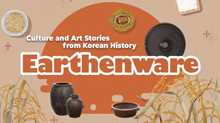 Earthenware08:28
Earthenware08:28 -
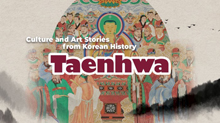 Taenghwa, or Buddhist Paintings in the Joseon Period08:36
Taenghwa, or Buddhist Paintings in the Joseon Period08:36 -
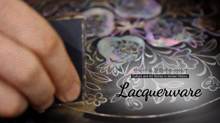 Lacquerware09:04
Lacquerware09:04 -
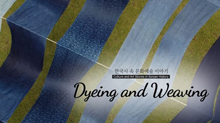 Dyeing and Weaving08:21
Dyeing and Weaving08:21 -
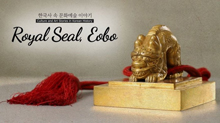 Royal Seal, Eobo07:53
Royal Seal, Eobo07:53 -
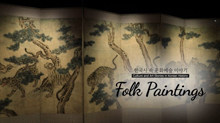 Folk paintings07:49
Folk paintings07:49 -
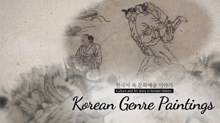 Korean Genre Paintings10:05
Korean Genre Paintings10:05 -
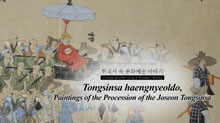 Paintings of the Procession of the Joseon Tongsinsa10:09
Paintings of the Procession of the Joseon Tongsinsa10:09 -
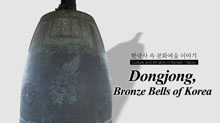 Dongjong, Bronze Bells of Korea08:50
Dongjong, Bronze Bells of Korea08:50 -
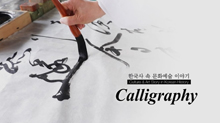 Calligraphy08:32
Calligraphy08:32 -
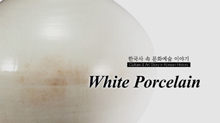 White Porcelain08:18
White Porcelain08:18 -
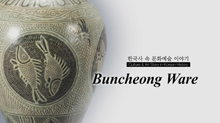 Buncheong Ware07:48
Buncheong Ware07:48 -
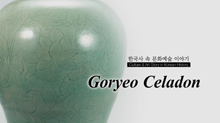 Goryeo Celadon07:54
Goryeo Celadon07:54 -
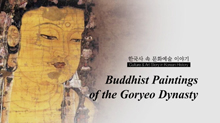 Buddhist Paintings of the Goryeo Dynasty07:57
Buddhist Paintings of the Goryeo Dynasty07:57 -
 Clay Figures, Figurines07:01
Clay Figures, Figurines07:01 -
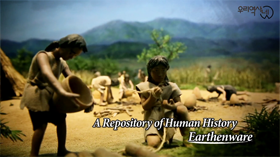 Clay Earthenware06:05
Clay Earthenware06:05 -
 Paintings of the Joseon Dynasty08:09
Paintings of the Joseon Dynasty08:09 -
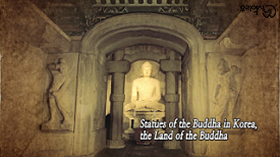 Statues of the Buddha in Korea09:03
Statues of the Buddha in Korea09:03

